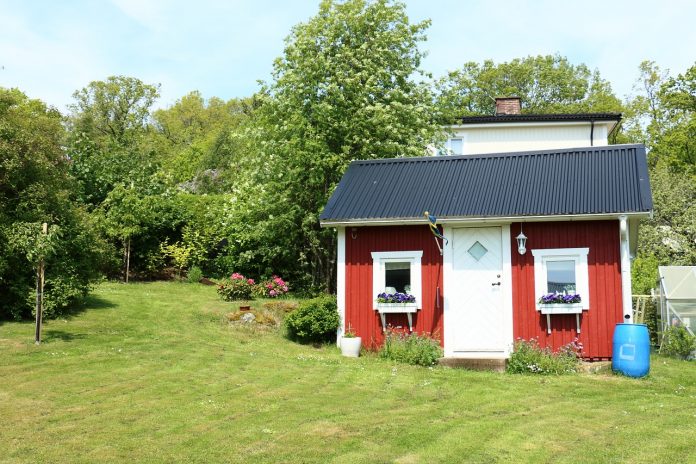Rain barrels can help manage stormwater on your property, as well as, benefit the environment. Installing a rain barrel enables you to capture and store rainwater for later use. The additional water source can help you save drinking water resources, decrease your water and sewer bills, utilize high water quality for your lawn and garden and reduce nonpoint source pollution.
Benefits
Conserving drinking water resources. The average household can attribute nearly 30% of its daily water use to lawn and garden care. When water is collected from rain and used to water plants, the amount of total drinking water used decreases.
Reduce water and sewer bills. If your water is provided by a municipal source, collecting and using rainwater can lower your bills.
Provide higher quality water for plants. Treated water often contains chlorine, making it less valuable to plants than water collected from rain.
Reduce nonpoint source pollution. Nonpoint source pollution is created when rainwater drains over land surfaces and picks up contaminants en route to streams and rivers. Some examples include rainwater traveling over driveways and roads coated with motor oil residue and road salt, and agricultural fields where fertilizers and pesticides have been applied. Because rain barrels reduce the amount of water draining off your property, they also reduce nonpoint source pollution.
Determining size
Rain barrels come in sizes ranging from 30 to 100 gallons. You can determine a rough estimate of the capacity you’ll need by calculating the surface area of your roof that’s draining into the downspout about your rain barrel, as well as, calculating the volume of water per rain (on average) in inches. For example, a surface area of 1000 square feet receiving half an inch of rain would result in 300 gallons of water to be captured in rain barrels. you may opt to use one large rain barrel or a series of rain barrels to capture a portion of the water.
Installing your rain barrel
- Build an elevated stand for your rain barrel to sit on to allow easy access to the spigot at the base of the barrel. Make sure your stand is sturdy enough to withstand the weight of the rain barrel when it’s full.
- If there’s enough room to add a second rain barrel later, make sure to choose a barrel that allows another to connect to it.
- Choose a rain barrel that is child- and animal-proof with a lid that can’t be easily removed.
- Install a mesh filter either on top of the rain barrel or attached to the downspout to filter out debris.
- Install an overflow valve connected to a hose, so water from a fully-filled barrel can flow away from your house. Or purchase a diverter to install on the downspout. A diverter will allow water to fill the barrel, and once full, return the flow back into the downspout.
Using water from rain barrels
Water collected in rain barrels can be used to water your lawn or garden. You can attach soaker hoses or fill watering cans to accomplish this.
Other tips
- Although rainwater does not contain chlorine or other additives and is considered better for plants, it is not potable and should not be used to drink or cook. Rainwater can pick up contaminants from your roofing materials, leaf litter, bird droppings, dust, and other airborne materials.
- Rain barrels should be emptied and covered or stored during winter months. The freezing and thawing of water can crack your rain barrel components.
- Clean out your mesh filter and rain barrel periodically to remove debris that has settled.
- Make sure the overflow hose drains into an existing garden or plant a rain garden to manage the excess water.
- It is best to use rainwater on inedible plants; however, you can use the water collected in your rain barrel to water fruit and vegetable plants. Just make sure to water near the base of the plant and avoid the fruit and foliage, especially on leafy greens, to avoid contamination and ensure safety.
- Avoid watering edible plants if you have an old tar and gravel, old asbestos shingle roofs, treated wood shingles or shakes, copper roofs and if you have a zinc anti-moss strip. Additionally, if your gutters are coated in lead-based paints don’t use the water you’ve collected on edible plants.











